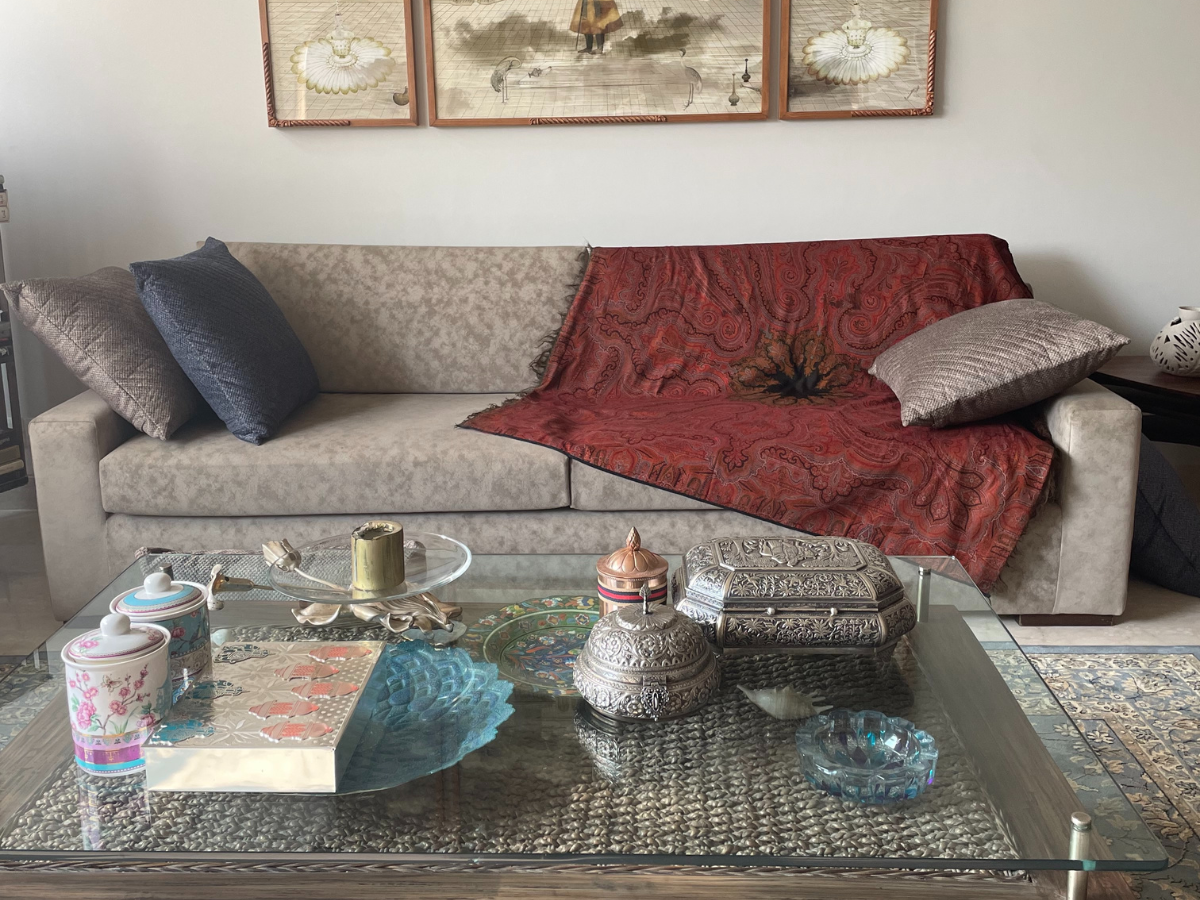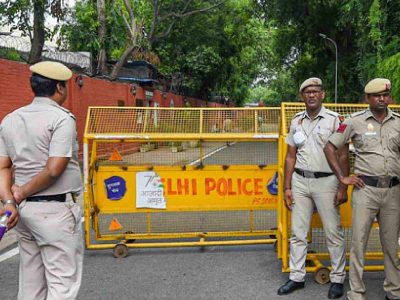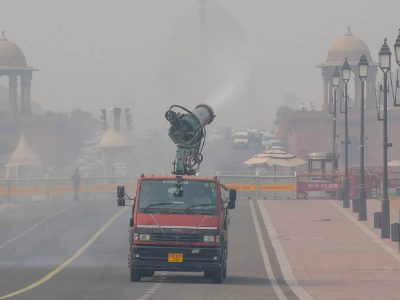The city’s most stylish people are already showing off what is the best part of a north Indian’s winter wardrobe – stunning traditional shawls that add elegance and a regal touch to all outfits, be it menswear or womenswear.
Nidhi Jain, a well-known art gallerist, textiles researcher and a designer of fine handcrafted ensembles affirms that Delhi folks have the most stunning and rare collection of these heritage wrap-around drapes.
Among those who have the best shawls in the city, she names theatre stalwart Sushma Seth, social worker and textile revivalist Laila Tyabji and Abha Dalmia who has been working in the textile and crafts arena for more than four decades.
Gentlemen too are not behind when it comes to love for the shawl. The late Arun Jaitley boasted of an enviable collection and sarod maestro Amjad Ali Khan is rarely seen without a stunning shawl draped over his shoulders during the winter months.
She says, “Shawls from all over India that have evolved from weaving skills spanning many generations are a passion with me. For generations now, both my family as well as my husband Rajnish’s family have cherished and collected shawls. This love for shawls is common to both genders and the men in our family boast of an enviable collection. Come winter and these beautiful shawls are out of the closet and worn with every outfit to add a warm and regal touch to all formal occasions.”
Nidhi says that she adds a shawl to her wardrobe every winter.
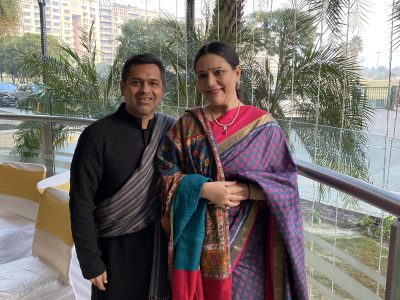
“For decades now I have been adding a shawl, which I find exceptional, to my collection every winter season. What is more, even my home is dressed up with a beautiful shawl used as a throw over a sofa or a chair to add a warm cosy feel to a cold Delhi day. I have seen women in Delhi and indeed the entire northern India flaunt such stunning shawls. I am now working on compiling a complete book on the different kinds of shawls that are no less than a work of art and a valuable part of our heritage. As I delve deeper into the tradition of these drapes, I am becoming more and more enamoured and fascinated.”
Here is what she has to share about her experience of buying, wearing, collecting and cherishing these lush, hand-woven and hand-embroidered warmers. If you are a shawl lover, use this checklist to know and, if possible, add these precious shawls to your wardrobe.
She explains, “The warm woollen shawls are worn all over the northern parts of the country where the winter is harsher. In other parts of the country, lighter fabrics like cotton, silk are substituted because shawls there are worn mainly to add a touch of royalty and as a symbol of authority of the wearer. These shawls are often gifted to seniors and achievers as a mark of respect.”
Nidhi has travelled widely to source and do extensive research on the characteristics of the best traditional shawls from all over the country. She shares her learning:
Pashmina (Kashmir and Ladakh)
The most regal of all shawls, of course, is the Pashmina and the now-banned Shahtoosh. I will avoid talking about the Shahtoosh since today it is legally banned because of the cruel treatment of the angora rabbit whose neck fur is used to make these shawls. I would like to appeal to all lovers of shawl to please not shop for the Shahtoosh shawl. Both the Shahtoosh and Pashmina of course are royal shawls that belong to Kashmir and Ladakh region and are known all over the world for the exquisite texture and weave. Their softness and warmth is legendary and they are coveted possessions. Cashmere goat wool is used to make Pashmina shawls. Both types of shawls are usually available in natural or in soft muted colours.
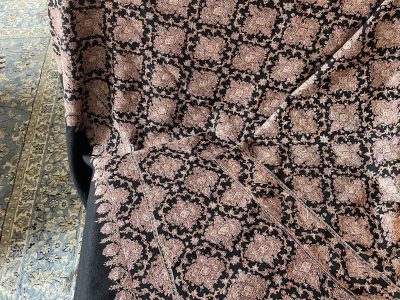
Special mention needs to be made about the Kani shawl. This is a type of Kashmiri shawl originating from the Kanihama region of Kashmir and is one of the oldest handicraft of the Valley dating back to the Mughal period. The shawls are woven from Pashmina yarn. The government of J&K has granted a geographic identity to the Kani shawl. This exquisite shawl was a prized possession for Mughal royals, Sikh maharajas and British aristocrats alike. The Ain-i-Akbari even mentions that emperor Akbar was an avid collector of Kani shawl.
Kullu (Himachal Pradesh)
The Kullu shawls from Himachal Pradesh are easily recognised due to their brightly patterned structure. These shawls are created by a tapestry technique and are characterised by their coarse feel and design. The raw material is goat wool and the motifs on a Kullu shawl are striking and colourful in design. One can usually also find a cute Kullu cap that matches the design of the shawl.
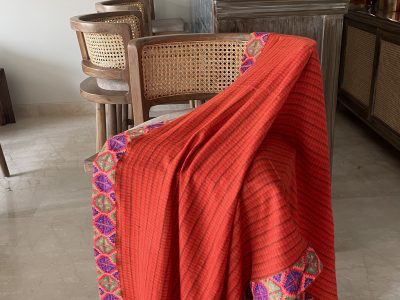
Naga shawls (Nagaland)
In total contrast to the Kashmir shawls, and closely linked to the folk and tribal life of the Northeast, are the Naga shawls that are woven with thicker wool and with a vibrant colour palette of black and maroon with patterns in red, white and yellow.
The designs consist of abstract as well as figural representations of humans and animals and even have variations from the various tribal communities from the state. These are typically made in wool and are perfectly suited for the winter temperatures across North Indian states.
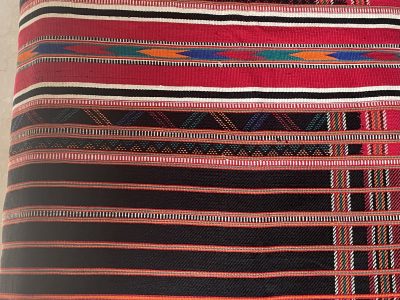
Bhujodi shawls (Gujarat)
The Bhujodi shawls of Gujarat date back to weaving traditions that are 500 years old. This is a unique weaving tradition of the Rabari tribe in Kutch. The shawls are woven with extra-weft designs on a plain warp using rich shades of natural colours. Their special feature is that the designs used are mostly geometric woven and aesthetically placed in symmetric arrangement.
Kapadaganda shawls (Odisha)
Odisha’s Dongria Kondh tribe’s indigenous shawl majorly uses colours of red, yellow, green and brown. These shawls are entirely handmade on a coarse white fabric that is available locally. These are shawls used by the tribe for gifting as a mark of respect to elders.
Kantha shawls (West Bengal)
The Kantha shawls of the Bengal region are embellished with intricate embroidery technique of Bengal and woven on silk. The Kantha needle-work is a traditional form of stitching that uses leftover pieces of different fabric or old used fabric together to form patchwork drapes or sheets.
Kalamkari shawls (Andhra Pradesh)
The pretty Kalamkari shawls in hand-printed or block-printed designs is a typical Srikalahasti and Machilipatnam handicraft. These are made in cotton using natural, rich colours and the designs hold religious significance. Vegetable dyes with buffalo milk are used to prepare the colours.
Today, many contemporary designers are mixing weaves and genres to create unique and customised products priced at a premium for elite clients. Those who value handwork are eager to own such pieces which are usually one of a kind.
Pulling her own colourful wool Kalamkari shawl (a customised piece since Kalamkari is usually done on cotton) tightly around herself, Nidhi cautions, “If you love handlooms and handcrafts and are missing out on any of these beauties, it would be wise to add them to your collection at the soonest possible. The creation of each of these shawls is a skill that is honed over years and the techniques are handed down through generations. In a modern world, these are dying arts that may sadly be lost to the future generations. By investing in these shawls, you are not only owning a piece of Indian heritage but also helping to revive and preserve an ancient art.”

